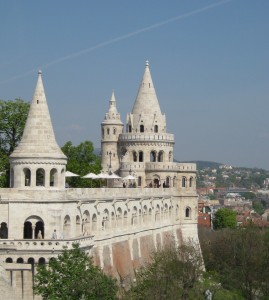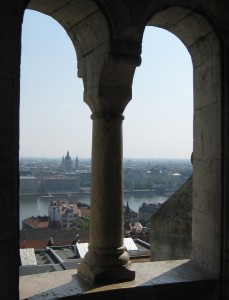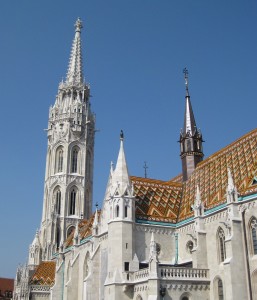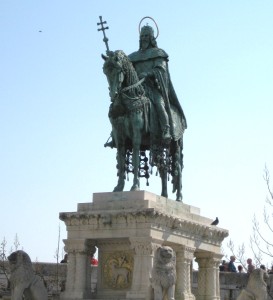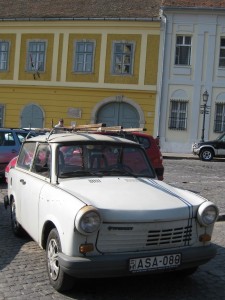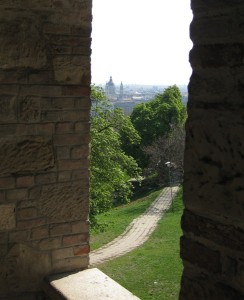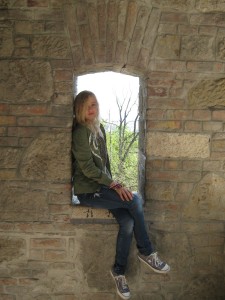View of Budapest and the Danube from the ramparts of Fisherman’s Bastion.
The Matthias Church, named for Hungary’s King Matthias.
Statue of St. Stephen, Hungary’s first king and patron saint.
As we headed away from the Matthias church, our guide stopped us by a small white car parked in what appeared to be the center of the cobblestone street. A Trabant, an East German relic from the Communist period, it made the Datsun 1200 my mother drove in the 70s look as luxurious as a Jaguar. Our guide spoke passionately and eloquently about the difficulties of day-to-day life during Communism. For decades, the Trabant was the only car the average Hungarian could hope to afford. It was notorious for its tiny engine, heavy black exhaust, and hard plastic body made of recycled materials. Months and sometimes years passed between the time of order and delivery. But it could carry four people and some luggage. Our guide clearly considered the sad-looking little car a symbol of the daily indignities the Hungarian people suffered during the totalitarian regime.
The East-German-made Trabant, a relic of the Communist period.
After parting with the Trabant, we had free time to walk on our own. Just steps away from the busy area of the Bastion, the narrow streets were quiet and serene on this beautiful Palm Sunday morning. My parents accompanied D and me for a while, but before long they headed back to the bus, leaving us for more adventurous exploring. We like to go “off road” when we have the chance. I’ve learned that beauty often hides in unexpected spots. Winding around behind the rather sleepy Budapest Hilton, we found a secluded brick and stone stairway of medieval appearance that led down to the wild and overgrown banks of the Danube. Through window-sized openings in the massive stair wall, the distant towers of Parliament could have been Sleeping Beauty’s spellbound castle. Much like during our meanderings through the Four Seasons the night before, we seemed to have Budapest to ourselves. We had stumbled upon another marvelous secret in this ancient, enchanting city. My daughter and I will always remember Budapest as a gracious place that seemed eager to greet us, to reveal something truly special when we took the time to really look.
The towers of Parliament glimpsed through the stair wall.
D enjoys a lookout post in the wall.

